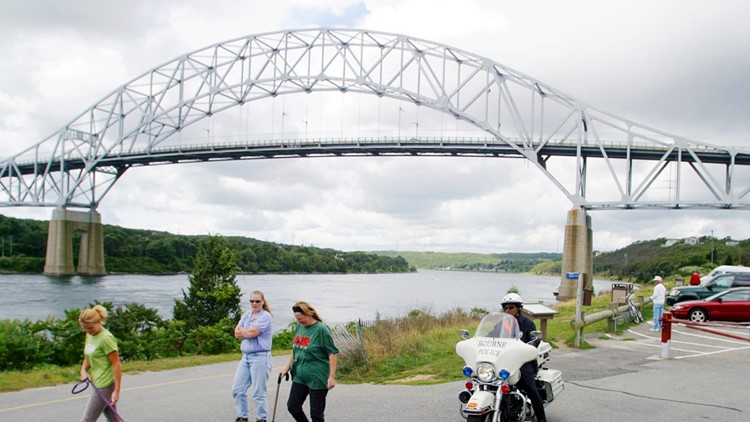BOSTON — Massachusetts Gov. Maura Healey is hoping to jump-start the replacement of the two bridges connecting Cape Cod to the rest of the state by focusing first on federal dollars to replace the Sagamore Bridge before turning to the Bourne Bridge.
The renewed effort comes as earlier attempts to win federal funds to replace the bridges have failed, including an application for $1.88 billion by the U.S. Army Corps of Engineers, which operates the bridges.
Healey, who took office in January, said the administration is committed to replacing both bridges, but it is taking a new approach by focusing initially on the Sagamore Bridge.
“We are proud to be finalizing our application this month to compete for $1.45 billion in federal funds,” the Democrat said in a written statement. “This first phase will enable us to get shovels in the ground quickly on the Sagamore Bridge, lay the groundwork for rebuilding the Bourne Bridge, and move forward on the permitting and design of both bridges.”
The bridge work will create good-paying construction jobs and spur economic growth, Healey said. She pointed to three main reasons to start with the Sagamore Bridge — traffic, safety and economic impact.
Of the two bridges, the Sagamore experiences a higher volume of traffic and accounts for about 56% of crashes that occur on the bridges. A new Sagamore Bridge will have wider lanes, future rapid bus transit, and bicycle and pedestrian access across the Cape Cod Canal.
The new Bourne Bridge will also include a shared-use path for bicyclists and pedestrians.
The U.S. Army Corps of Engineers is the owner of the bridges. The Corps will maintain control of the existing bridges until the new bridges are completed, at which point control of the new structures will be transferred to the state.
The Corps has warned that if the bridges weren't replaced within the next several years, one of the spans would have to be completely closed for 18 months for maintenance.
The bridges are often choked with traffic, especially during the summer tourist season.
Construction on both existing bridges began in 1933. Their narrower lanes no longer meet current highway standards.
There are no plans for tolls on the new bridges, officials have said.



